Useful Information | Methods of Plant Configuration for Residential Landscape Design (Attached: Plant Configuration Data for the North and South)
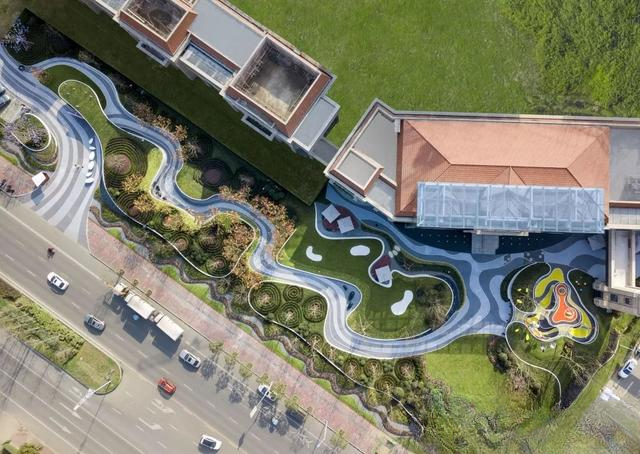
Landscape of Chengdu Huayangnian Jiangshan Demonstration Area
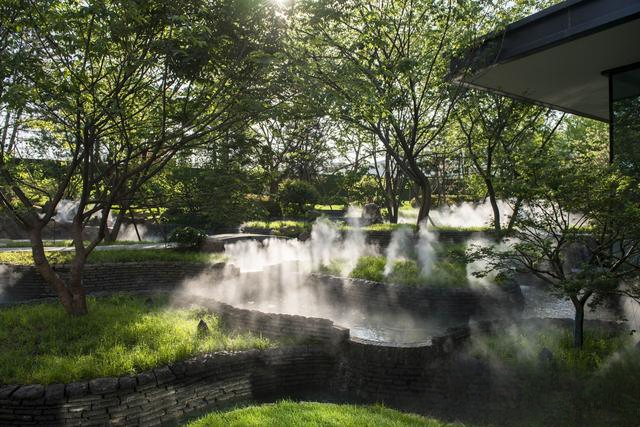
Image source: Beijing Sino-Ocean Sky Spring and Autumn Xiaoshan Residential Landscape
Useful Information | Methods of Plant Configuration for Residential Landscape Design (Attached: Plant Configuration Data for the North and South)
1. Functions of Plants in Residential Areas
1. Improve the environment
It can improve the living environment, such as purifying the air, shielding noise pollution on the road, absorbing carbon dioxide, reducing dust and haze, and regulating the microclimate environment in the area.
2. Ornamental
The plant landscape has high ornamental value, such as red flowers and green leaves in spring, dense green shade in summer, abundant fruits in autumn, and colorful leaves in winter, which improves the quality of life and life experience of residents in residential areas.
3. Regulate the climate
Regulate the microclimate of residential areas and alleviate the heat island effect in the area.
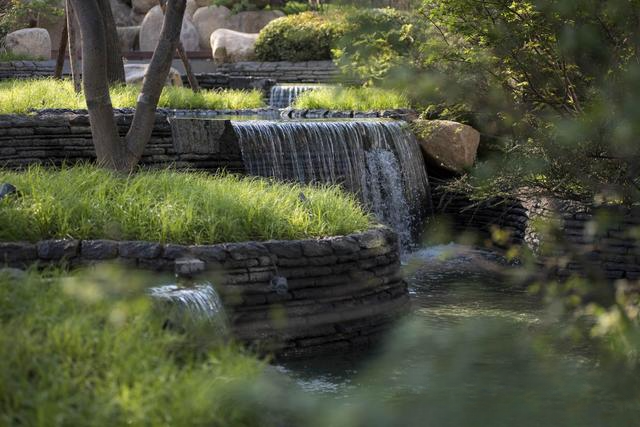
2. Principles of plant landscape design in residential areas
1. The principle of adapting measures to local conditions
Based on various factors such as the terrain, climate, cultural habits and customs of the residential area, design and create a plant landscape style that suits the characteristics of the residential area.
2. The principle of economic applicability
Comprehensive consideration should be given to aesthetics, visual perception, and actual use to ensure practicality, elegance, and reasonable layout, avoiding excessive luxury and pursuit of high-end products.
3. The principle of changing seasons and beauty
Plant landscape design needs to be foresighted and able to understand the different postures of various plants in the four seasons. It must also be designed in a coordinated manner from multiple aspects such as form, color, and smell in order to create a residential community plant landscape that is beautiful and has scenery in all four seasons.
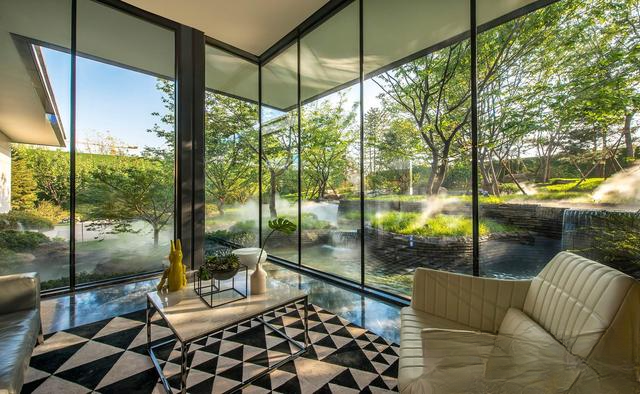
4. Follow the principle of individual design based on spatial attributes
From the perspective of green space function, residential areas can be divided into green space for residents' sports and activities and green space for leisure and viewing . For leisure use, three-dimensional comprehensive greening can be adopted, and green space with strong integrity can be selected to increase the permeability and viewing of the landscape; for greening of residents' sports and activities, species such as lawns and shrubs with long growth cycles, resistant to pruning, and suitable for trampling should be selected.
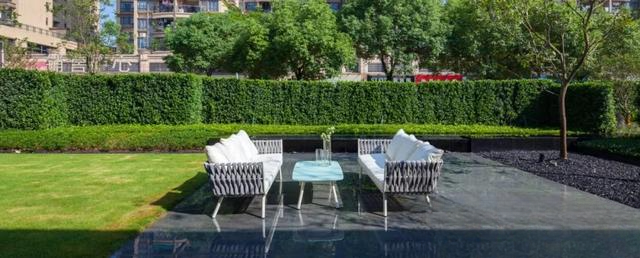
Zhongshan KWG Yingyuetai Demonstration Area Landscape
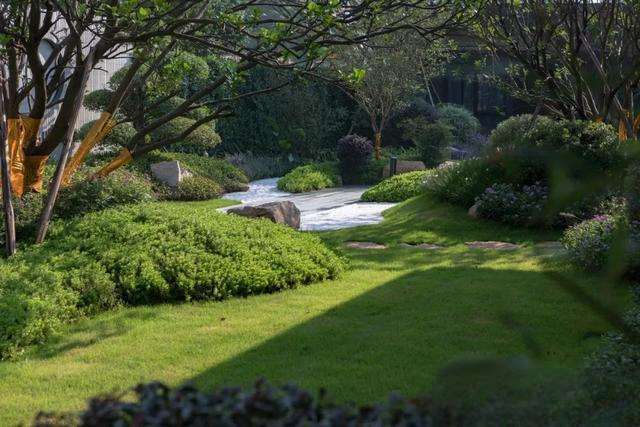
Zhongshan KWG Yingyuetai Demonstration Area Landscape
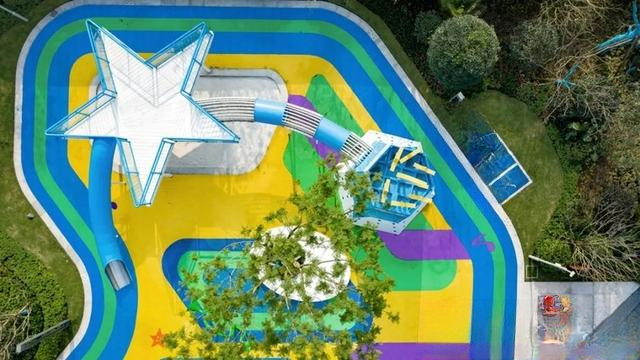
Chongqing Zhongjian Jinhecheng Demonstration Area Landscape
5. Ecological principle
Plant landscape design should not only create beautiful landscapes in the present, but also consider future landscape effects, so that plants can become more and more abundant and have more and more unique value over time.
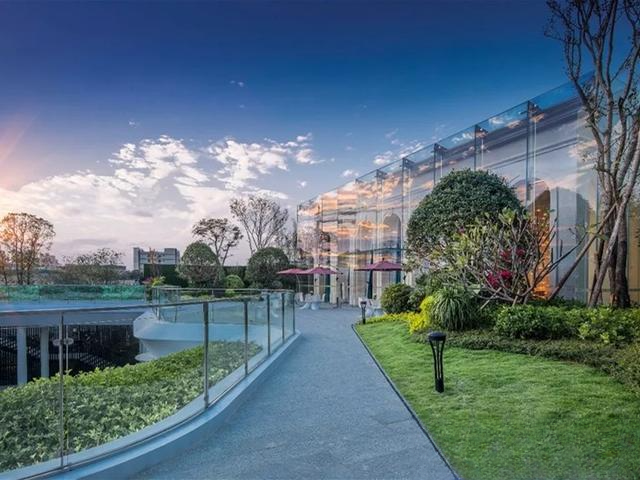
Landscape of Xuhuicheng Demonstration Area in Shishi, Fujian
3. Design methods of plant landscape in residential areas
1. Reasonable combination of various plants
Through the combination of various forms of plants such as trees, shrubs, and ground covers, a plant landscape with staggered heights and ups and downs can be created. Large trees are tall and can usually serve as the main framework of the plant landscape; small and medium-sized trees have beautiful postures and can be used to set off the atmosphere; flowering shrubs have delicate shapes and colors, which have the effect of icing on the cake; low shrubs can form a large volume and rich green effect, which is suitable as an environmental background or to cover the relatively rigid building corners.
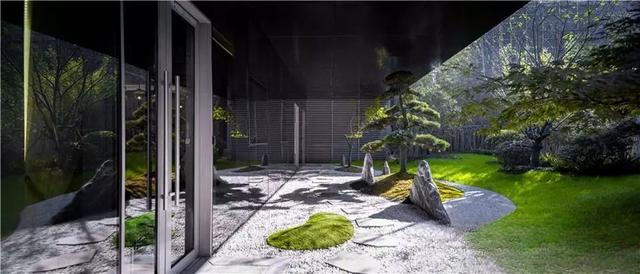
Landscape of the Shanghai Poly Capital Exhibition Area
2. Flexibly use a variety of planting methods
The plant landscape design in residential areas should use a variety of planting methods to make the landscape varied yet unified.
For example , camphor trees, sycamore trees or ginkgo trees can be planted symmetrically in rows at the entrance of the residential area , which looks solemn and neat. Symmetrical podocarpus and osmanthus trees can be planted in front of the residential buildings .
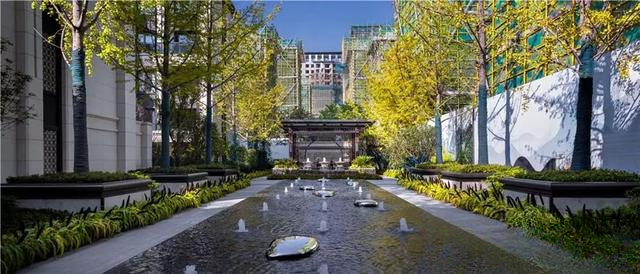
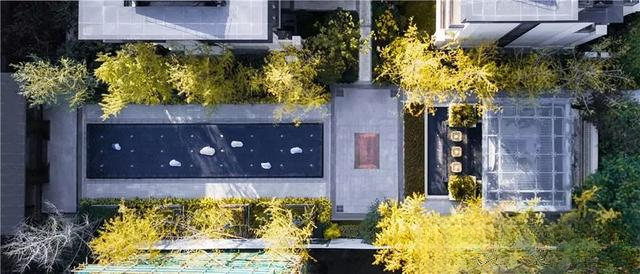
Landscape of the Shanghai Poly Capital Exhibition Area
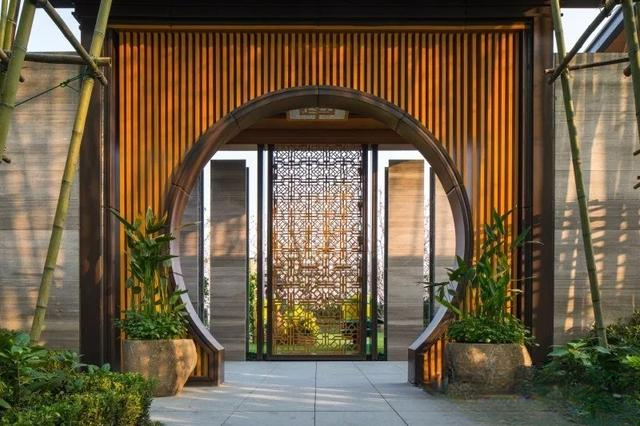
Jiangyin Xuhui Chengjiang Mansion Demonstration Area Landscape
Solitary planting can reflect the individual beauty of a tree and become the focus of the space. It is usually used to create the main scenery.
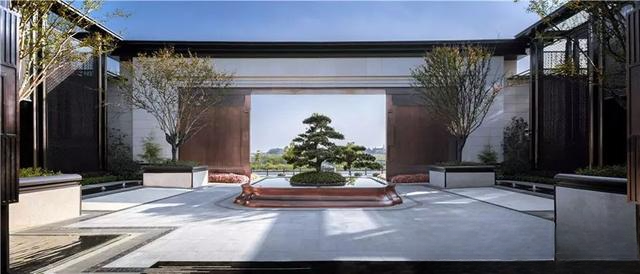
Landscape of the Shanghai Poly Capital Exhibition Area
Cluster planting, a combination of three or more trees of different species, can be used as the main scenery or background;
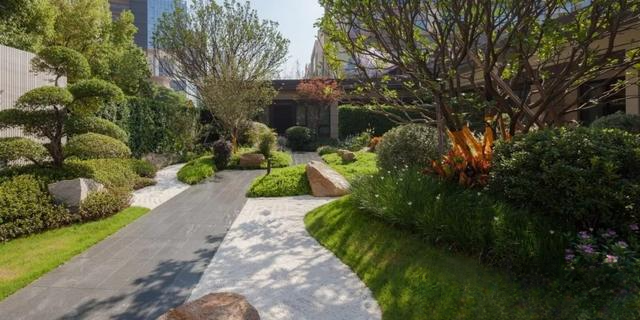
Zhongshan KWG Yingyuetai Demonstration Area Landscape
Group planting , planting trees of the same kind, creates a forest scene, and embodies the beauty of the group.
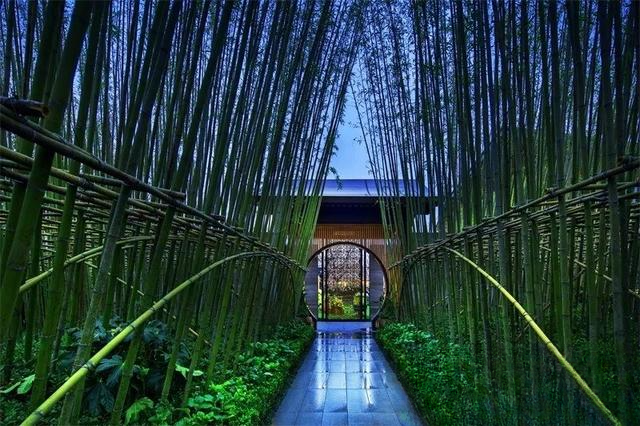
Jiangyin Xuhui Chengjiang Mansion Demonstration Area Landscape
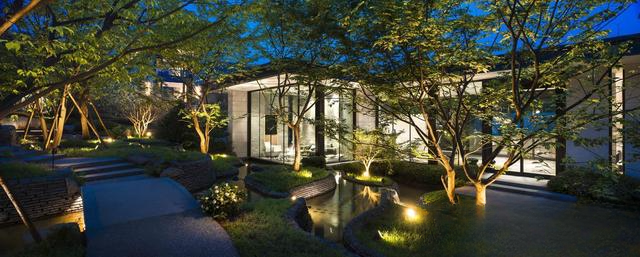
Beijing Sino-Ocean Sky Spring and Autumn Xiaoshan Residential Landscape
3. Use contrast and contrast skillfully
Using the differences between individual plants can create an extraordinary and outstanding effect. There are many types of plants, and each plant has its own specific forms. In the process of plant configuration, various composition factors such as the posture, leaf shape, leaf color, flower shape, and flower color of the plant can be used for comparison to set off a beautiful landscape.
For example, red-flowered Loropetalum and Ligustrum lucidum can be used to create color bands or patterns with obvious red and green contrast; Japanese maple trees whose leaves turn red in autumn can be planted near tall evergreen trees to create contrasts in height, size, and red and green.
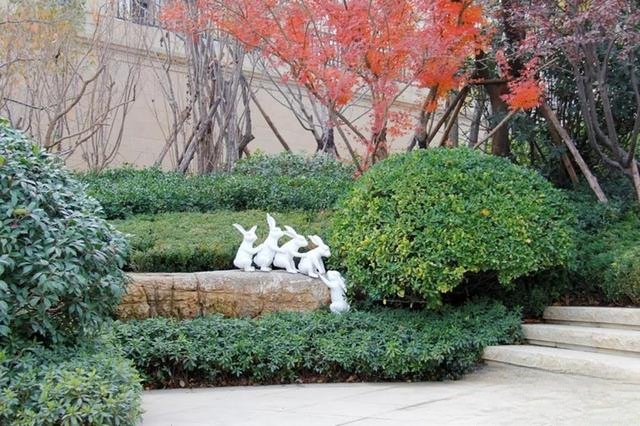
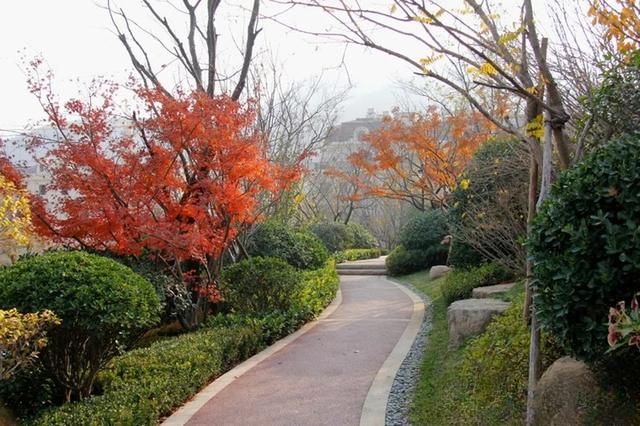
Qingdao Haier Bordeaux Town Landscape
4. Steps for designing plants in residential areas
1. On-site research
Conduct detailed on-site investigations and collect information from all aspects, including natural restrictions on residential areas such as climate and meteorological conditions, topographic conditions, soil conditions, hydrological and water conservancy conditions, original ecological vegetation conditions of the project site, etc., as well as social conditions of the residential project site such as existing traffic conditions, surrounding population conditions, historical and cultural conditions, current industrial and agricultural development conditions, and urban master plan restrictions.
2. Solution Design
When we get a project, we usually look at the style of the architect of the community, and then see whether the themes of the landscape nodes are related to plants, such as crape myrtle flowers, cherry blossom garden, etc., and then configure the relevant plants based on the themes of these landscape nodes.
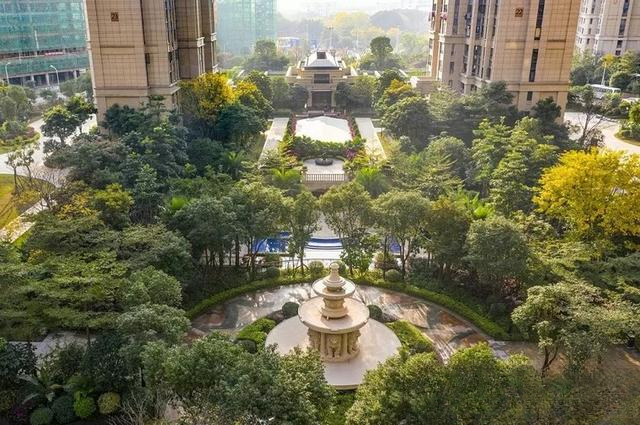
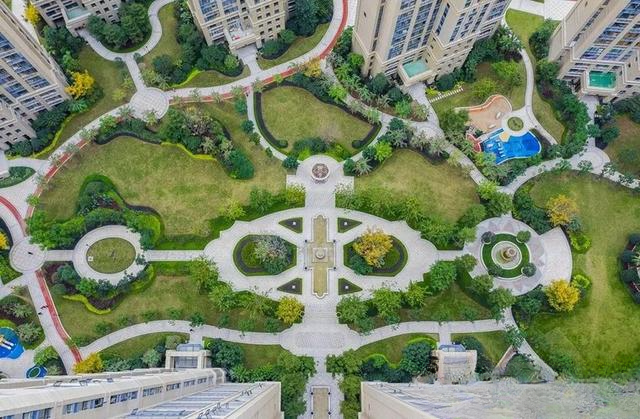
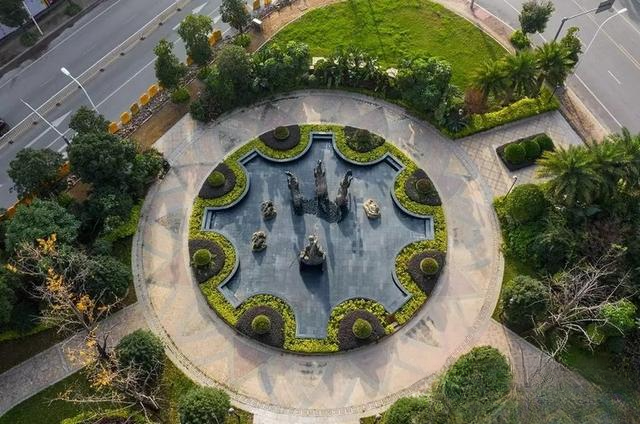
Landscape of the Fujian Sunshine City Financial Street Residence Demonstration Area
3. Variety selection and reasonable configuration
Generally speaking, the selection of species, matching and layout requires consideration of factors such as the local climate, the city's environment, the overall design of the community, the composition of the soil, the combination of functional areas, etc. For most residential communities, species with a high survival rate and strong adaptability should usually be selected as community lawns and basic greening .
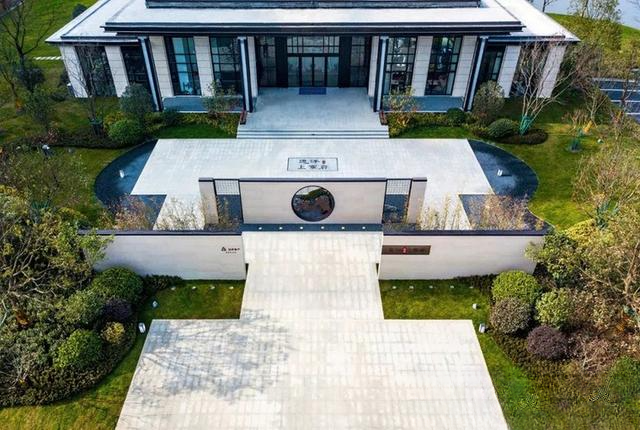
Landscape of Hefei Sino-Ocean Shangningfu Demonstration Area
4. Plant landscape configuration in residential areas
Residential plants are generally divided into entrances and gates, community roads, landscape nodes, fire protection, squares, water features, garage entrances, intersections and corners, etc.
1): Plant configuration at the gate and main entrance:
The gate of a residential area is the face of the entire residential area, and developers usually spend a lot of money to build it. The planting arrangement must also complement each other. The plant species should be selected carefully, with relatively larger specifications. Sometimes, colorful tree species are appropriately used, and the specific combination of different forms of entrances can highlight the landscape quality of the entire property.
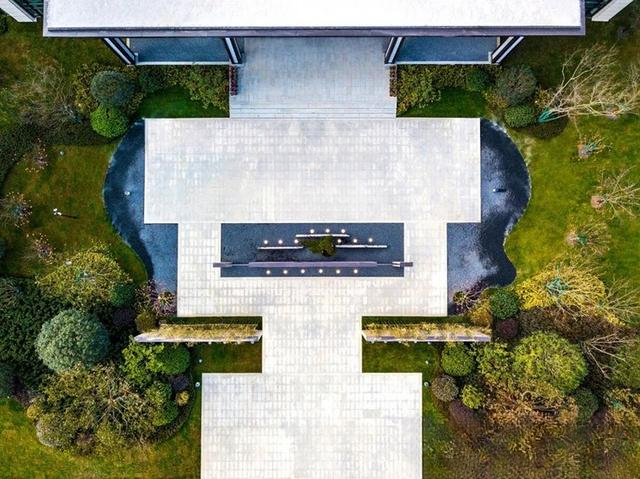
Landscape of Hefei Sino-Ocean Shangningfu Demonstration Area
picture
2): Plant configuration at the entrance
It should give people a sense of stability and security. The common green screen not only separates the courtyard from other courtyards, but also implies a sense of security for family members. The green screen realizes the spatial limitation of each family area, so that people can obtain relevant territory. The main features of the entrance are outlined by combining a certain number of trees.

W Private Residences Phetchaburi, Thailand
3): Community road greening
Fast-growing broad-leaved trees are used as the forerunner and evergreen trees are used as the dominant trees along both sides of the community roads. In areas with relatively wide spaces, trees, shrubs and plant color bands are planted and integrated with the front and back of the buildings, using points to lead lines and lines to connect points, thus achieving a high degree of integration between road greening and house greening.
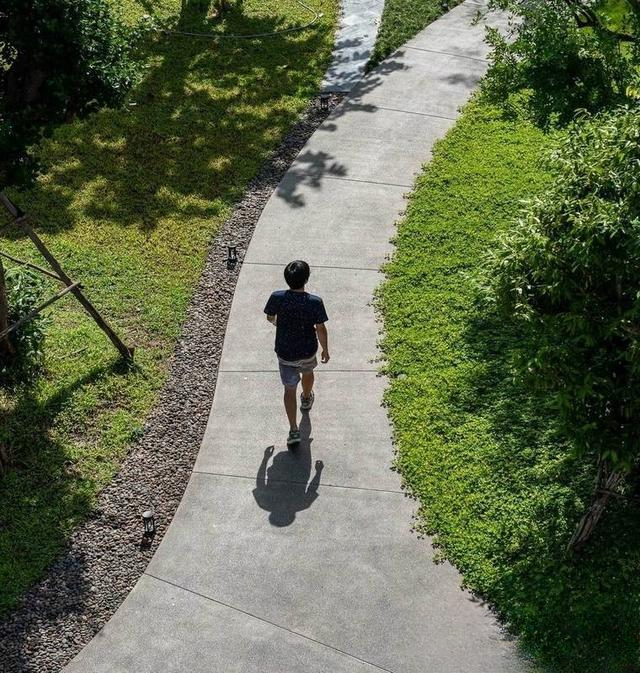
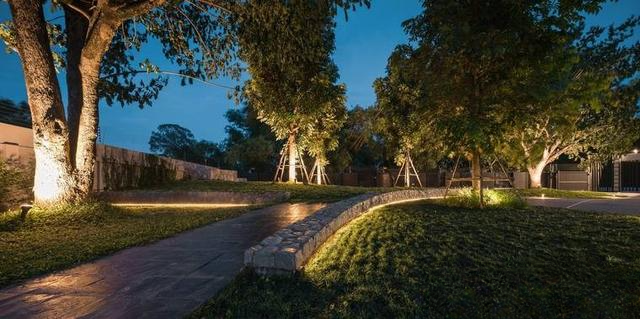
W Private Residences Phetchaburi, Thailand
Reference for greening of residential roads
Northern Region:
a: Erythrina, Spruce, Weeping Willow, Ligustrum lucidum, Boxwood, Pansy
b: Sophora japonica, Erythrina, Triangle maple, Spruce, Crape myrtle - Boxwood, Pearl plum, Golden leaf Ligustrum lucidum, Red flower Loropetalum - Summer violet, Petunia
c: birch - sage
d: Acer truncatum - Golden Baby Daylily Loropetalum - Ophiopogon japonicus Poa annua
e: Sophora japonica - Chinese rose, Ligustrum lucidum, Loropetalum grandiflora, Nandina domestica, Photinia narion, Camellia - Rhododendron pubescens
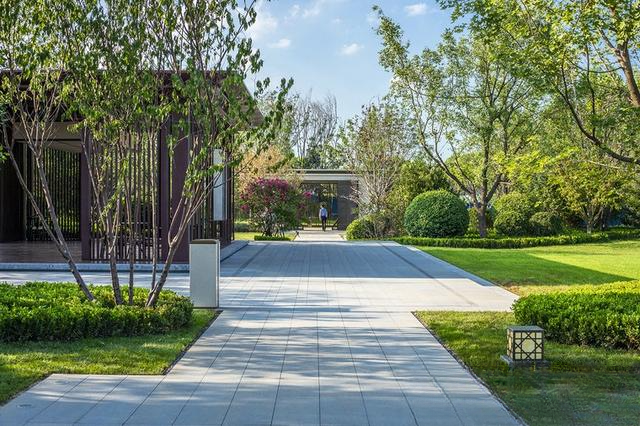
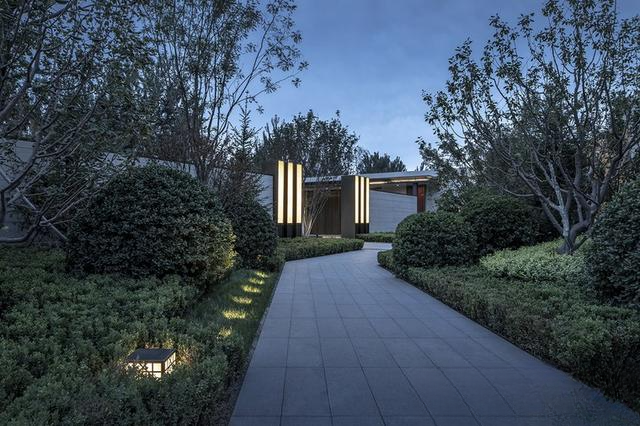
Beijing China Railway Overseas Chinese Town Heyuan Landscape
Southern Region:
(1) Osmanthus fragrans, Podocarpus cycad, Plumeria ovata, African jasmine, Golden leaf forsythia, Cycas revoluta, Loropetalum chinensis, Schefflera arborvitae, Fujian tea, Manila grass
(2) Melaleuca alternifolia, Cotinus coggygria, Photinia fraseri, Camellia sinensis, Forsythia suspensa, Loropetalum truncatum, Asparagus cochinchinensis, Pteris cretica
(3) Erythrina small-leaved fig sugar gum tree - small palm red-leaved photinia red-flowered loblolly golden fig - Schefflera arborvitae cigar-flowered asparagus
(4) Bauhinia scabra, Camphor gum, Metasequoia glyptostroboides, Cotinus coggygria, African jasmine, Loropetalum scabra, Golden-leaved Forsythia suspensa, Agave tequila rubra, Ilex serrata, Lantana camara, Lawn grass
(5) Bauhinia palm - African jasmine golden leaf false forsythia
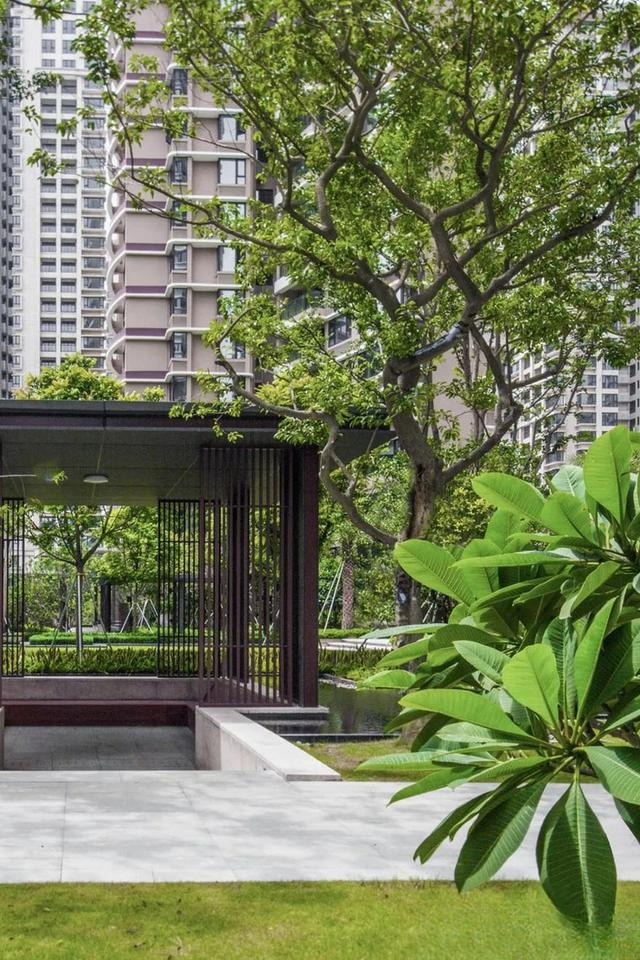
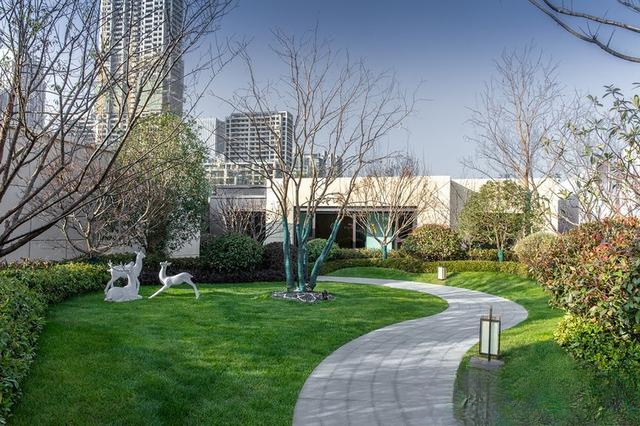
Hefei Contemporary Swan Lake MOMA Launch Area Landscape
4): Group greening of landscape nodes
For the space with a large corner area in the community, the landscape design uses the undulating micro-topography as the framework, with Photinia, Boxwood, Pittosporum, and Ligustrum lucidum as the keynote tree species , and can be configured for the four seasons of spring, summer, autumn, and winter:
In spring, there are cherry blossoms, peach blossoms, and crabapples;
Summer scenery features crape myrtle, magnolia and pomegranate;
The autumn scenery features sweet-scented osmanthus, ginkgo, red maple, hibiscus, etc.
For winter, cedar, bamboo, plum blossoms, wintersweets, etc. are planted.
On top of the changing terrain, the dense planting of floribunda roses, red-flowered sempervivum, golden-leaf privet and boxwood forms colorful ribbons, which makes the plant landscape around the buildings have both wide-space changes and contrasts, as well as seasonal changes in time, achieving a feeling of "forest in the city, city in the forest".
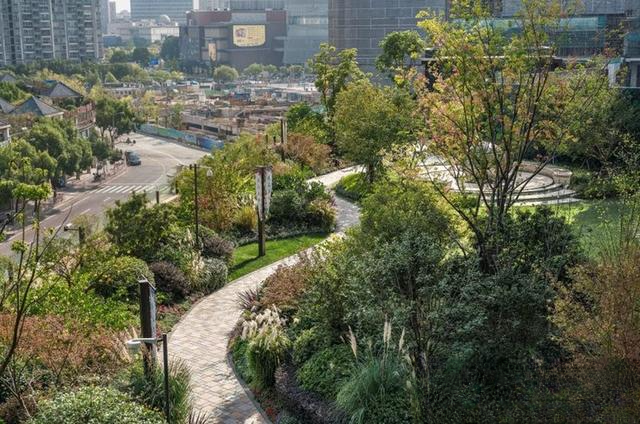
Shanghai TODTOWN Tianhui Yuelu Demonstration Area Landscape
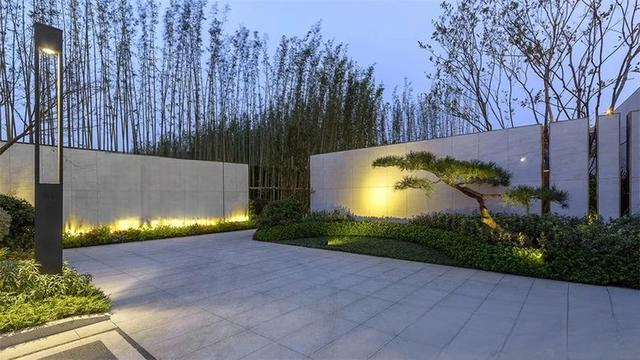
Suzhou Zhongnan Xuhui Kuanyue Yayuan Demonstration Area Landscape
5): Plant configuration for community fire protection
Plants play a major role in modifying and softening hardscapes such as fire lanes, becoming the ideal direction for transforming fire lanes. The curved and smooth lines of roads and color blocks and the green color blocks in the middle form a natural community courtyard environment.
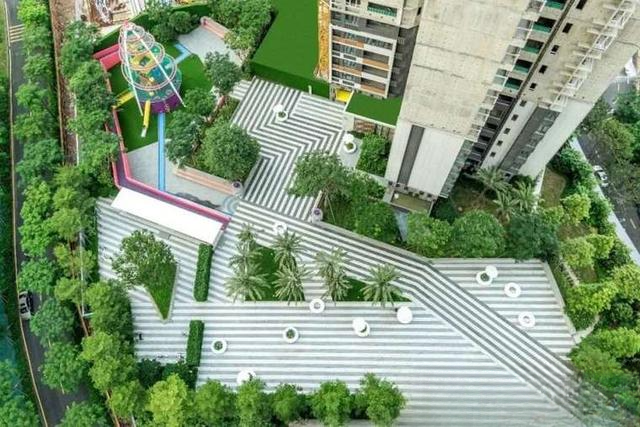
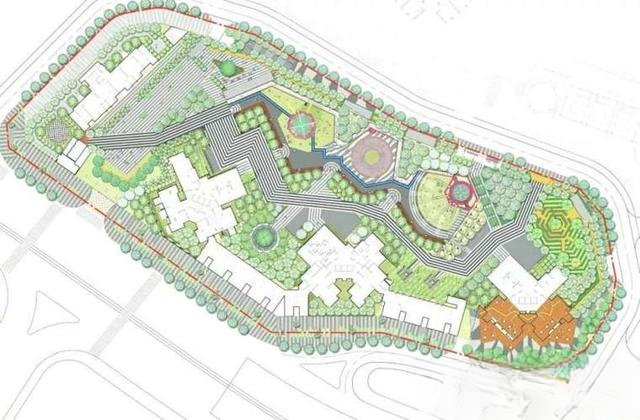
Shenzhen Licheng Xiyueshan Residential Landscape
6): Residential Square Plants
Arrangement type: Square greening is mainly used around the square or in long strips for isolation and shielding, and can also be used as a background. A combination of trees, shrubs, flowers and grasses should be adopted in greening planting. At the same time, the habits and characteristics of trees (color and shape, etc.) should be fully considered, and attention should be paid to the spacing between plants to ensure sufficient sunlight and growth space.
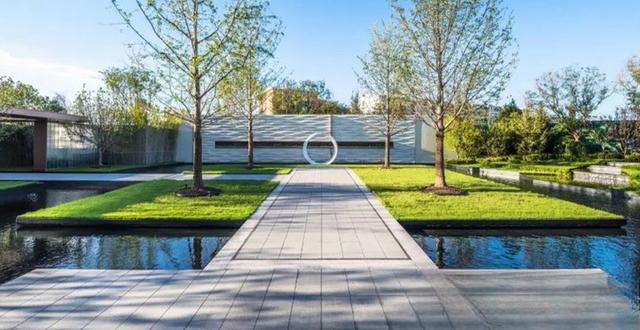
Landscape of Tianjin Tianyue Haihe Demonstration Area
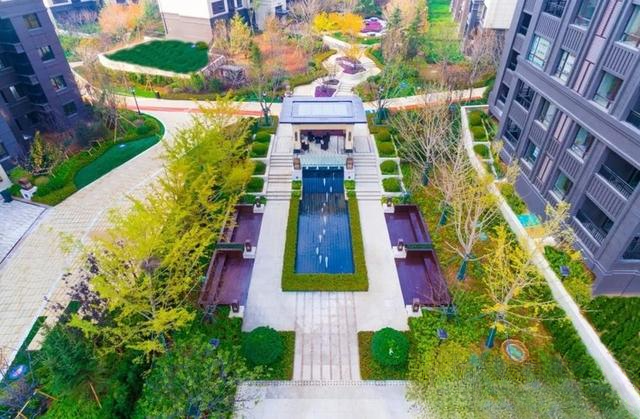
Dalian Longhu Xinghaibi'an Residential Landscape
Cluster type: Several trees are grouped together, such as a combination of trees and shrubs, or shrubs and flowers.
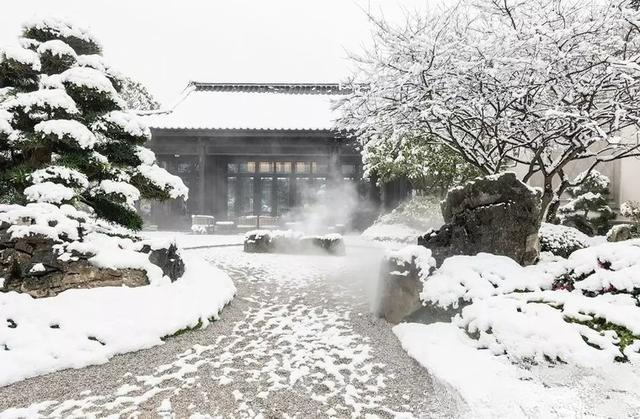
Hangzhou Binjiang Shengyuan Xianghu Lake Demonstration Area Landscape
Natural style: Plant trees in a natural grouping pattern. This layout should fully consider environmental factors, so that each plant can not only grow normally but also form a lively landscape.

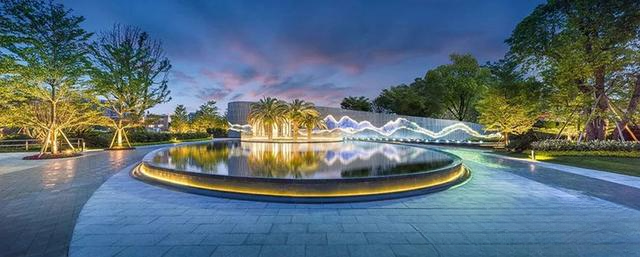
Landscape of Wuxi Kangqiaofu Demonstration Area
7): Waterscape and greening
The landscape water system of the residence and the hydrophilic green ground cover by the pool can be made of irises, pampas grass, red-flowered sempervivum, golden-leaf privet and other varieties, combined with the landscape pool cap and landscape stones, and planted with emergent plants, loosestrife, etc. to create a hydrophilic green space effect with natural forms, leaf colors, leaf shapes, flower colors and rich layers.
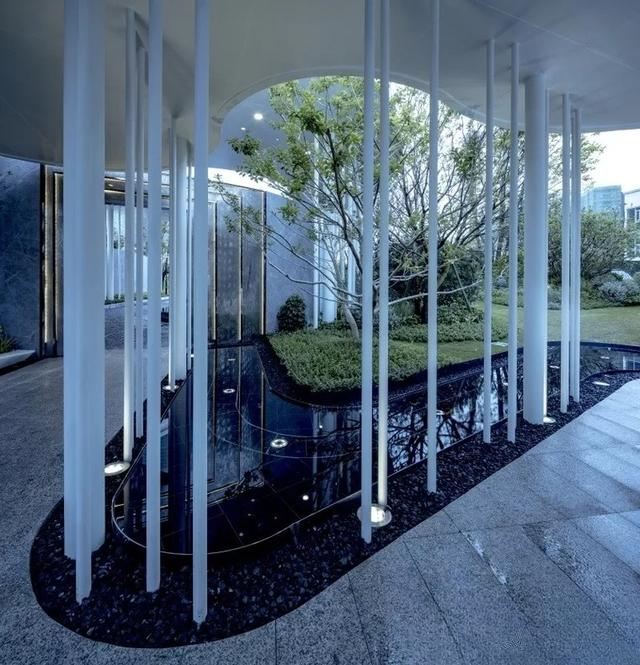
Landscape of the demonstration area of Midea Agile Xuhui Changlefu in Sanshui, Foshan
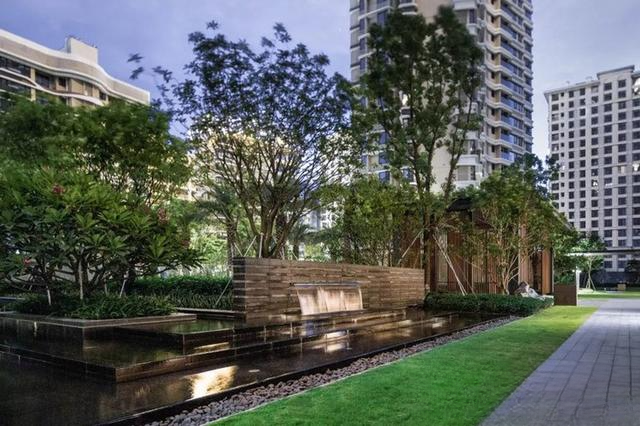
Zhuhai Huafa Yuefu Residential Landscape
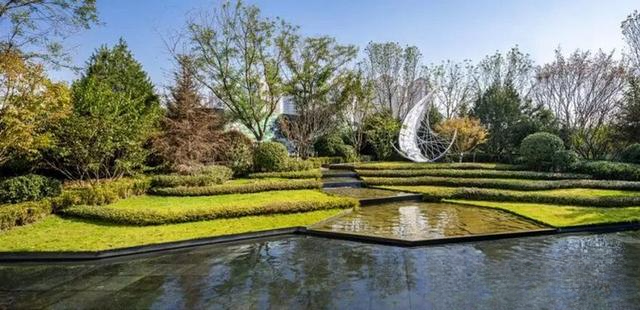
Landscape of Tianjin Tianyue Haihe Demonstration Area
8): Garage entrance plant configuration
Evergreen shrubs and evergreen shrub balls have strong dust retention effects and are best at absorbing harmful gases. The main requirement is that they should not block the driver's view when entering and exiting.
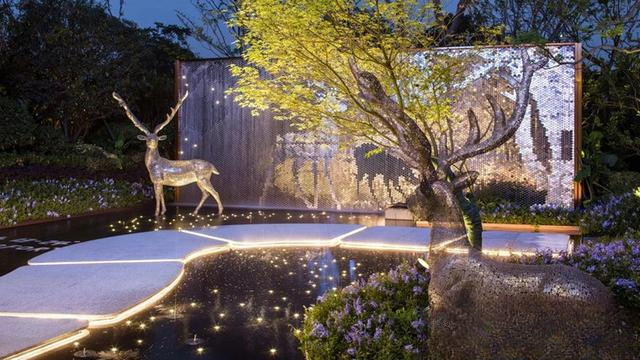
Landscape of Hefei Longhu Chunjiang Licheng Experience Area
9): Greening of intersections and corners
Green areas at intersections and corners: Small stone landscapes and low flowering shrub ribbons are set up on the sides of intersections and corners leading to each building, which can form obvious signs and cover the edge lines of the corners.
10): Plant configuration in the recreational and game areas of the residential area
When planning the environment and arranging plants, we should focus on making it natural and interesting, with less artificiality, and pay more attention to the safety of the amusement environment.

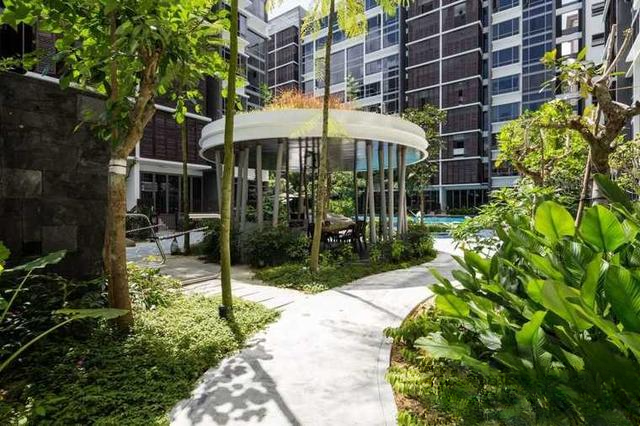
Singapore natural apartment landscape
When arranging plants, be sure not to plant plants with sharp branches and leaves , such as holly; do not plant plants whose branches, leaves, flowers and fruits are poisonous , such as oleander and calla lily; do not plant plants that are more likely to cause allergies.
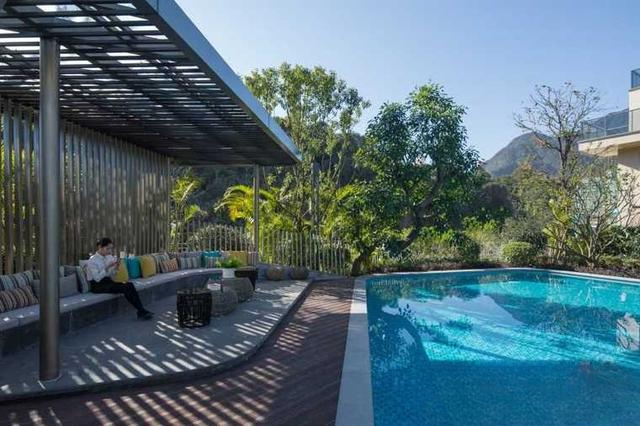
Landscape of the exhibition area of Fuzhou Sunshine City Poly Yuanxi Lishan
Plant configuration should be more open and participatory.
The recreation area has a large number of people entering and leaving every day, so not only will the fitness equipment be worn out, but the surrounding plants will also be more severely damaged than those in other areas. Therefore, this area needs to use plants and grass species that are easy to manage, resistant to pruning, and resistant to trampling .

4. Key points for plant landscape design in residential areas

1. Focus on growing native tree species and avoid blindly introducing foreign garden plant varieties.
2. Combine trees and shrubs, evergreen and deciduous, fast-growing and slow-growing , and appropriately configure and embellish some flowers and turf. Combine flowering and foliage plants. Herbaceous flowers can make up for the shortcomings of woody flowers and trees. The matching of tree species should not only meet the biological characteristics, but also consider the landscape effect.
3. The number of plant species should not be too many, but monotony should also be avoided, and the configuration should not be similar. Diversity and unity should be achieved .
4. On the basis of a unified tone, the tree species requirements must be varied, and plants with beautiful shapes, bright colors, and rich seasonal changes should be planted.
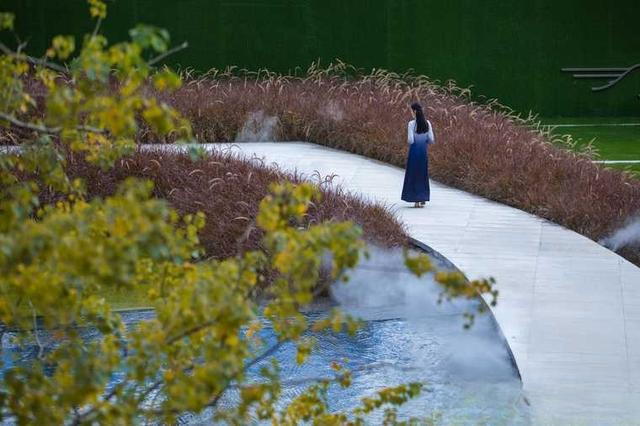
Landscape of the exhibition area of Fuzhou Sunshine City Poly Yuanxi Lishan
5. In terms of planting, except for the need for row planting, it is generally better to avoid planting at equal distances and heights. Solitary planting, paired planting, cluster planting, etc. can be used. Appropriate use of gardening techniques such as paired scenery and framed scenery can be used to combine decorative green space with open green space to create a variety of landscapes. (The above is about: planting form)
The principle of tree matching is to combine trees and shrubs, mix conifers and broadleaf trees, and appropriately decorate with flowers and climbing plants to give full play to the functions of plants, so that there are flowers in spring, shade in summer, fruits in autumn, and green in winter. It is not necessary to see green in all four seasons, but there must be scenery in all four seasons . Good plants must be placed in conspicuous places to highlight the living atmosphere of the landscape.
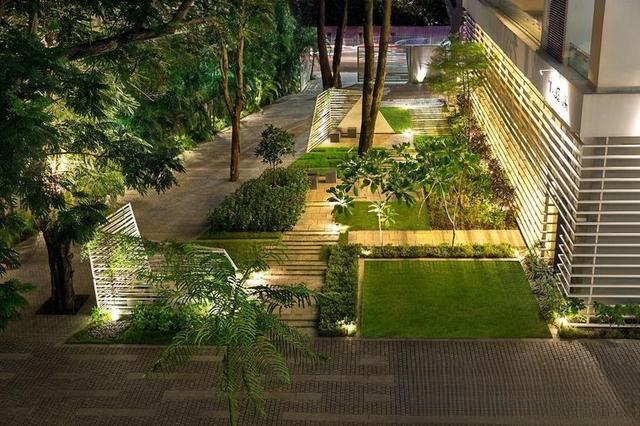
India GODREJ Residential Landscape
Finally, when we learn about plants, we all like to classify them. Of course, we don’t remember them by kingdom, phylum, class, order, family, genus, or species. For example, there are ways to learn about plants such as crape myrtle, bauhinia, purple-leafed plum, purple communis, etc., magnolia grandiflora, purple magnolia, white magnolia, and two-flowered magnolia. Of course, it is very easy to remember them as long as you find a suitable and favorite way.